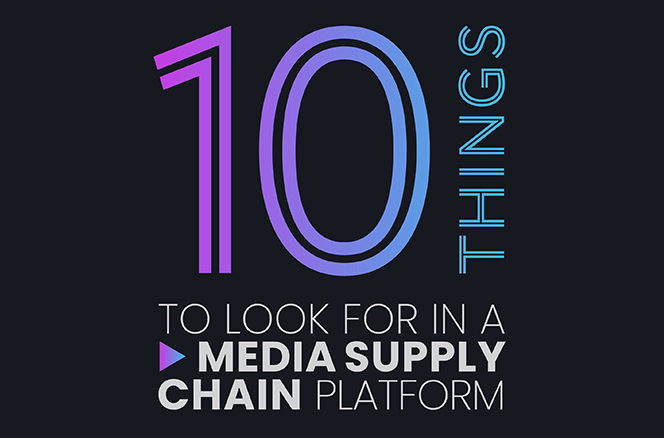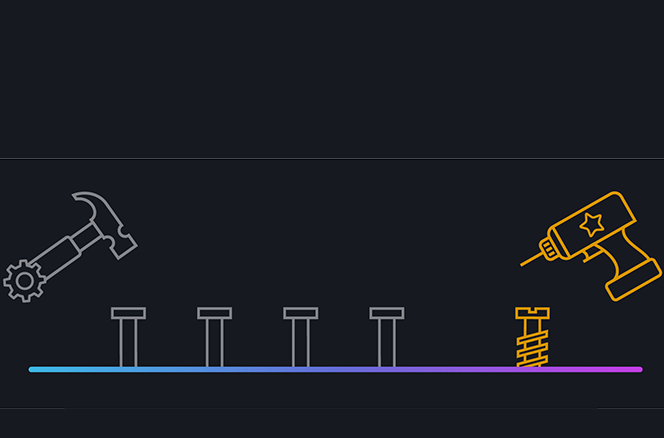How do you measure a media company’s responsiveness? The agility with which it can adapt to change or seize new opportunities? The time it takes to bring new content to market? Specific metrics for responsiveness are difficult to pin down. But having the capacity to flex and scale makes all the difference in being able to say yes to business opportunities, and it’s vital in an environment where nothing is predictable.
A media company can fret over forecasts or focus on lack of visibility, but the simple fact is that we operate in a business environment that is, always has been, and always will be unpredictable. Given this fundamental unpredictability, you could make the operational argument that responsiveness is, by definition, an imperative. (And on some level, the shift of media supply chains to the cloud reflects an acceptance of this dynamic.)
That’s why, when we heard the phrase “resources per output asset per time” from the team at one of our larger customers, we seized on it. This metric captures the benefit of responsiveness beautifully. It also highlights a truth that many Rally customers discover: While they can’t precisely define and measure agility, they can achieve it by focusing on efficiency. The more they push on efficiency, the more agility they gain.
In a non-automated, non-cloud world, a media company is limited in terms of when and where it can say yes. Still tied to sequential media processing, often in discrete silos with limited capacity, a business will struggle to leverage its infrastructure and resources fully. But cloud-based infrastructure — and particularly enterprise-level optimization in a fully virtualized infrastructure — changes the equation. It enables so much more efficiency and agility that the technical side of the business becomes an enabler of opportunity rather than an obstacle to it.
Efficiency begets agility, and agility begets efficiency. It goes both ways. If a media company can complete a process faster, then it’s likely going to spend fewer resources to do it. In other words, the business can maximize its financial return in two ways: lowering its costs for certain processes and accelerating its time to revenue for content flowing through those same steps.
While tempting in today’s market, a focus purely on the absolute lowest expense can threaten that dual (or compounded) benefit. Improved efficiency leads to better utilization of assets, which positions the business to realize more potential revenue gain. When the technical infrastructure and its responsiveness are seen as productive assets, the larger business can begin to think about different kinds of revenue-generating deals. And this is more than a shift in mindset. It leads to a different answer when a content marketing person says, “I’ve got a huge opportunity, but I need this much work done by this date.” Rather than respond with uncertainty or a no, due to time and expense, the technical team can supply a yes. “I can, and I can meet your budget.”
Being responsive to the business at times means enabling new revenues by pushing more content through the supply chain to fulfill a new opportunity. And at other times, it’s about completing tasks at a lower cost and dialing back infrastructure to reduce costs. A virtualized and optimized media supply chain affords media companies the ability they need to address these ever-evolving requirements. As a result, no job is too large and no deadline too tight.
What does this level of responsiveness look like in practice? Consider an actual Rally user and a typical deliverable as an example. After this company shifted its media supply chain to the cloud with Rally, its existing team was able to complete delivery of content — more than a dozen titles tailored for multiple international vendors — in just 90 minutes rather than the 14 hours previously required. In terms of time spent, that’s an improvement of better than 800%.
Back to the topic of metrics, the above example demonstrates the dramatic drop in resources per output asset per time that media companies today can achieve by leveraging cloud-based media supply chains. This capacity to respond quickly to demand while lowering the cost of completing that work translates to a competitive advantage and a real bottom-line benefit.
Interested in exploring how your operations can be more efficient and responsive? Click here to set up a meeting and let’s start the conversation.



